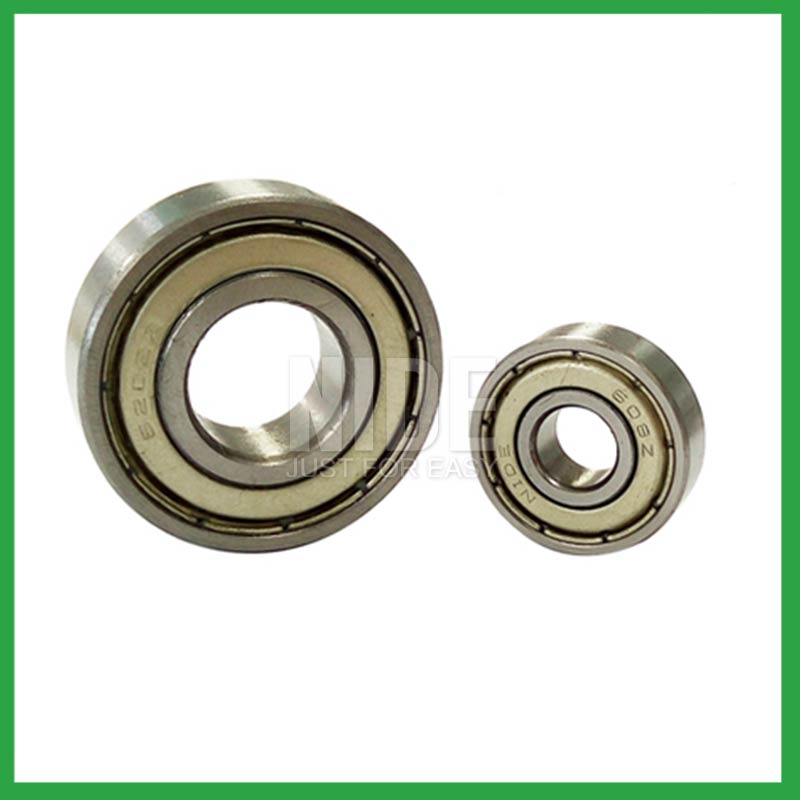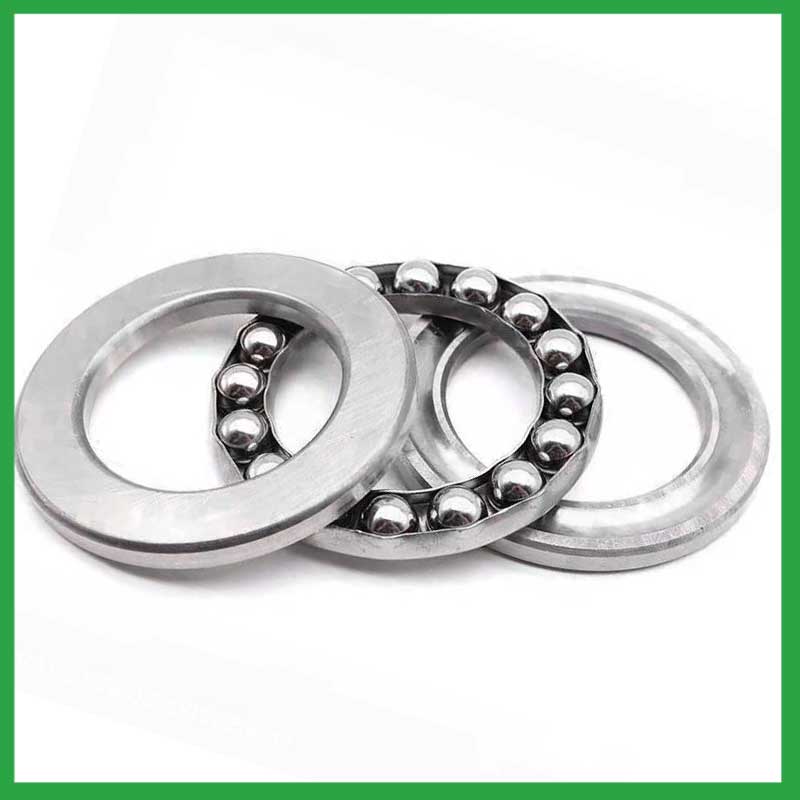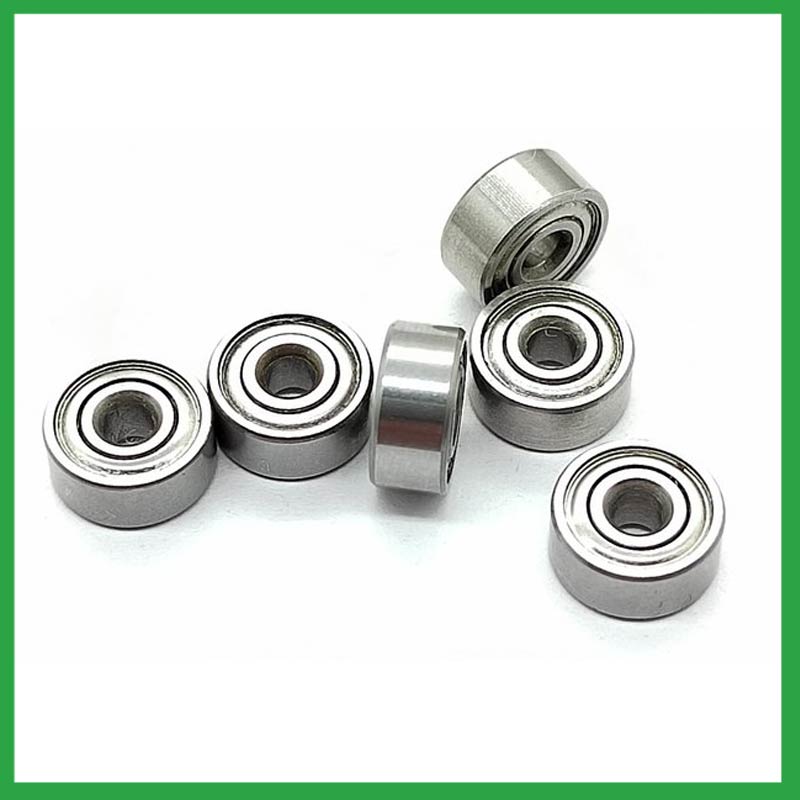PRODUCTS
CONTACT US
Ningbo Nide International Co., Ltd.
一一
· Contact person:Jack Zeng
· Mob/Whatspp/WeChat:0086-13738869026
· Email:emarketing@nide-group.com;marketing4@nide-group.com
· Add:No. 169, Wohushan Road, Daqi Subdistrict, Beilun District, Ningbo, China

Nide team could manufacture ball bearing as per customer’s drawing and samples.
If customer only has samples, we could also design drawing fo r our customer.
We also provide customized service.
Our ball bearing is widely applied the different industrials.
Ningbo Haishu Nide International Co., Ltd is located in the beautiful sea shore city--Ningbo, taking the advantage of advanced industries hub, perfect supply chain and convenient transportation, and integrating professional team with rich motor manufacturing experience , we focus on supplying the Motor Components One Stop Sourcing Platform to our customers.
Our products include shaft,fan,insulation paper,commutator,thermal protector,carbon brush,etc.Apart from these products, we also provide the service for the motor manufacturing technical consultant, project support and turn-key project.

| Parameter | Information |
| Product Name | ball bearing identification |
| Brand Name | Nide |
| Place of Origin | Ningbo,Zhejiang |
| Type | Ball |
| Material | chrome steel, etc. |
| Sample | Avaible |
| Warranty | 3months-1year |
| Lubrication | Dry/ Oil |
| Application | machine tools, etc. |
| Port | Ningbo/Shanghai |
| Size(mm) | customize |
| Export Country | Argentina,Brazil,South Korea,Slovakia,Norfolk Island,Bahamas, The,French Polynesia,Somalia...etc |
| Export region | Europe,Asia,Oceania... |
| Certification | ISO 9001 Certification,CE-insulation paper inserting machine,CE-stator coil lacing machine,etc |
| Precision Rating | as per customer's requirement |
| Feature | Good wear resistance,High precision...etc |
| Packaging Details | Suitable for sea transportation |
| Color | white+customized |
| Seals Type | Rubber seals |
| Service | Prompt Delivery |
| Supply Ability | 100000-500000 Piece/Pieces per Month |
| Lead time (days) | 15-20 (To be negotiated) |
Please note: The above table data is for reference only. For specific information, please contact us.
The precision range of ball bearing identification is from ABEC7 to ABEC9, with a particle size of 0.3 μ m. Among them, ABEC9's ball bearings have the best precision range and are widely used in the electronics industry, precision measurement industry, and so on.
Before use, the model, size, and design of the ball bearing should be confirmed to ensure suitable application;
During installation, the installation load of the ball bearing should be minimized as much as possible to avoid unnecessary damage;
The bearing shaft and the bearing frame should be stable at the same time to avoid excessive tension.
Ball bearings have many advantages, making them highly competitive in the market.
Firstly, they are very durable and have good wear performance, making their service life longer than many other types of bearings.
Secondly, they are easy to install and can provide low friction performance in various applications.
Thirdly, they require a relatively low level of maintenance, making them cost-effective.
In addition, compared to many other types of bearings, their purchase cost is relatively low, making them an economical choice.




ball bearing identification---FAQs Guide
2.Can ball bearing identification operate in high-temperature environments like industrial ovens or furnaces, and how are they protected from heat-related damage?
3.Are there ball bearing identification designed for use in critical medical equipment?
4.What is a ball bearing?
5.As a ball bearing identification manufacturer,How Can We Guarantee Quality?
6.Can ball bearing identification be used in both vertical and horizontal orientations?
7.What are the common materials used in ball bearing identification manufacturing?
8.What is the significance of ball bearing identification lubrication, and how does it affect bearing lifespan and performance?
9.Are there ongoing research and development efforts aimed at improving ball bearing identification materials, designs, and lubrication techniques?
10.Can ball bearing identification handle shock loads and high-impact conditions in heavy machinery?
11.What are the considerations for choosing between open, shielded, or sealed ball bearing identification in specific applications?
12.What is the role of ball bearing identification in reducing friction and energy loss in rotating machinery?
13.How do different ball bearing identification designs, such as deep groove, angular contact, or thrust bearings, cater to specific applications?
14.Are there miniature ball bearing identification designed for use in precision instruments and small-scale mechanisms?
15.Are there ball bearing identification designed for extreme temperature environments, such as cryogenic or furnace applications?
16.About ball bearing identification,Can I add my own logo?
1.As a ball bearing identification manufacturer,What is your payment method?
We accept T/T, PAYPAL or Western Union, credit card or via ALIBABA Assurance order.
2.Can ball bearing identification operate in high-temperature environments like industrial ovens or furnaces, and how are they protected from heat-related damage?
ball bearing identification are capable of working at temperatures up to +842°F (+450 °C). Special lubricants, seals and coatings make this possible by protecting the ball bearings from heat damage.

3.Are there ball bearing identification designed for use in critical medical equipment?
Precision ball bearing identification are among critical components in medical devices that are vital to ensuring patient safety. Correct choice of suitable ball and ring materials and the right product design can ensure high-precision bearings — and medical devices — have a long service life.
Precision bearings are used in a wide variety of medical devices including surgical power tools, ventilators and heart pumps — and patient safety depends on them all. Whatever the device, there is an onus on medical device original equipment manufacturers (OEMs) to ensure that the right type of bearings are chosen, and fit precisely into the application.
4.What is a ball bearing?
A ball bearing is a type of rolling-element bearing that uses balls to maintain the separation between the bearing races.
The purpose of a ball bearing is to reduce rotational friction and support radial and axial loads. It achieves this by using at least two races to contain the balls and transmit the loads through the balls. In most applications, one race is stationary and the other is attached to the rotating assembly (e.g., a hub or shaft). As one of the bearing races rotates it causes the balls to rotate as well. Because the balls are rolling they have a much lower coefficient of friction than if two flat surfaces were sliding against each other.
Ball bearings tend to have lower load capacity for their size than other kinds of rolling-element bearings due to the smaller contact area between the balls and races. However, they can tolerate some misalignment of the inner and outer races.

5.As a ball bearing identification manufacturer,How Can We Guarantee Quality?
Always a Pre-production Sample Before Mass Production;Always Final Inspection Before Shipment.
6.Can ball bearing identification be used in both vertical and horizontal orientations?
Sleeve Bearings: Sleeve bearings, also known as plain bearings, employ a simple yet effective mechanism. A cylindrical sleeve separates the rotating shaft from the stationary portion of the bearing, reducing friction and enabling smooth rotation. Sleeve bearings are characterized by their quiet operation, cost-effectiveness, and suitability for horizontal mounting orientations.
Ball Bearings: Ball bearings introduce small metal balls between the moving parts, providing enhanced durability and reduced friction. This design allows for smoother and more efficient rotation, making ball bearings well-suited for high-performance applications and vertical installations.

7.What are the common materials used in ball bearing identification manufacturing?
Most ball bearing identification are made of a type of steel known as high carbon chromium steel, often called chrome steel. This is used for reasons of cost and durability. Bearings are also made from other materials such as stainless steel, ceramics and plastic.
8.What is the significance of ball bearing identification lubrication, and how does it affect bearing lifespan and performance?
Bearing lubrication is vital for preserving the performance and lifespan of rolling element bearings. Lubrication helps separate moving parts relative to one another, such as rollers and raceways or balls, to prevent wear and tear and friction.

9.Are there ongoing research and development efforts aimed at improving ball bearing identification materials, designs, and lubrication techniques?
A custom ball bearing identification can satisfy almost any customer’s needs. Your application may need a needle roller or ball bearing, a radial or angular contact design, a plain carbon steel bearing with anti-corrosion coatings or stainless steel, a thrust bearing or a spherical bearing, tight or loose radial play, sealed or non-sealed designs
10.Can ball bearing identification handle shock loads and high-impact conditions in heavy machinery?
As a general rule, ball bearing identification are used at higher speeds and lighter loads than are roller bearings. Roller bearings perform better under shock and impact loading. Ball bearings tolerate misalignment better than roller bearings do. Roller bearings can handle heavy combined radial and thrust loads.

11.What are the considerations for choosing between open, shielded, or sealed ball bearing identification in specific applications?
While sealed bearings offer superior protection and maintenance advantages, shielded ball bearing identification can be more suitable in situations where minimal friction and operating temperature are crucial. It's essential to assess the operational environment and demands before making a selection.
12.What is the role of ball bearing identification in reducing friction and energy loss in rotating machinery?
ball bearing identification reduce friction by using smooth balls lubricated with oil or grease that freely roll between a smooth inner and outer surface. The main concept of the ball bearing is that objects that roll past each other produce less friction than if the objects were sliding against each other.

13.How do different ball bearing identification designs, such as deep groove, angular contact, or thrust bearings, cater to specific applications?
Deep groove ball bearing identification: Deep groove ball bearings are the most common type. They can handle both radial and axial loads. Angular contact ball bearings: Angular contact ball bearings have higher than average internal axial clearance. They can handle axial loads in one direction and moderate radial loads.
14.Are there miniature ball bearing identification designed for use in precision instruments and small-scale mechanisms?
Miniature bearings, despite their small size, play a significant role in various industries and applications. These compact powerhouses, typically measuring less than one inch in outer diameter, offer exceptional precision, durability, and reliability. Miniature bearings find extensive use in precision instruments and robotics.

15.Are there ball bearing identification designed for extreme temperature environments, such as cryogenic or furnace applications?
High temperature ball bearing identification use specialized lubricants to stand up to high temperatures. Grease-packed bearings are pre-filled with fluorine grease for high temperatures, while YS and SJ bearings use molybdenum disulfide (MoS2) solid lubricant to withstand temperatures up to 350°C and 400°C respectively.
16.About ball bearing identification,Can I add my own logo?
Yes, you can add your logo on bearings and packing box. We supply OEM SERVICE including bearing's size, logo, packing, etc.


